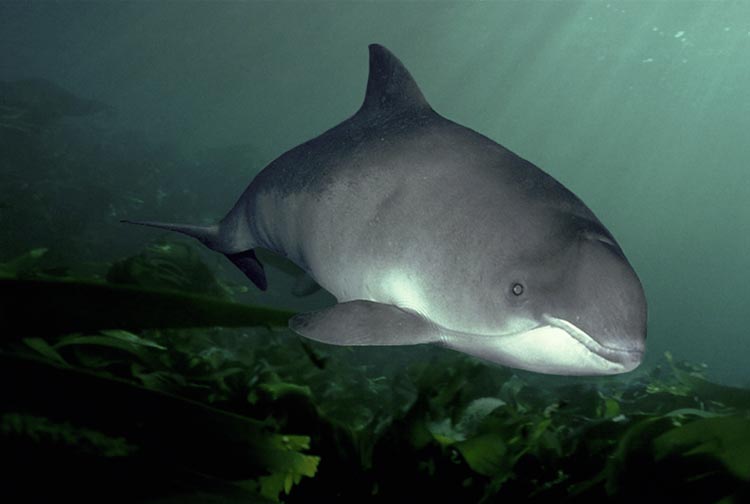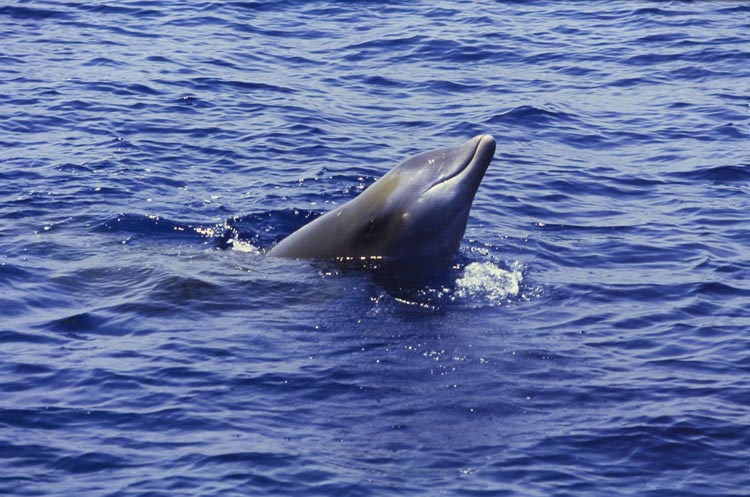SPERM WHALES

© Frédéric Bassemayouse
The Life of the Sperm Whale
How many of us know that the third largest animal of the planet, who also has the largest brain to have ever been recorded in the animal kingdom, lives in the Greek seas? Sperm whales (Physeter macrocephalus) stand out not only for their size but also for their sociability, their amazing diving skills and their infallible bio-sonar system, which they use for foraging and orientation purposes.
The sperm whale’s greek population numbers around 300 individuals. They swim all along the Hellenic Trench (from the west of the Ionian Islands and the Peloponnese to the south of Crete and the southeast of Rhodes), in the Myrtoan Sea and in some parts of the Aegean. When at the surface, sperm whales swim at a relaxed 7 km/h. When diving, they reveal their huge tails and can go as deep as 2,000 meters and remain underwater for up to 90 minutes.
The Sperm Whale: A Social Being
The social structure and hierarchy that sperm whales develop are quite impressive—even by human standards. Notably, during birth, the entire social group assists and protects the mother-to-be. Their social groups are large families comprising mature females with their calves and immature individuals of both sexes.
Most sperm whales are very closely related because females born in a group remain with it for life. Living in the group, they learn to dive, to use their echolocation system, to capture their prey, to communicate, to respect social hierarchy and all that is necessary for an evidently sociable being. Matriarchal communities are the vehicles that carry the sperm whale “civilization” from one generation to the next with mothers passing on all their knowledge to their calves. Unlike female sperm whales, males become increasingly solitary as they approach adulthood.
Life under Threat
The most significant threats to sperm whales are collisions with vessels, military drills, the search for hydrocarbons, the ingestion of solid waste and the accidental entrapment during fishing activities. Specifically, marine mammals often mistake plastic bags for food and swallow them; this causes the obstruction of their digestive tracts and most likely results in an agonizing death.
Prolonged exposure to noise may lead to hearing loss, and the fact that sperm whales sleep in a vertical position makes them more susceptible to collision with vessels.
HARBOUR PORPOISES

© naturepl.com /Florian Graner / WWF
The Life of the Harbour Porpoise
One of the first to ever describe this marine mammal was Aristotle. Its scientific name, Phocoena phocoena, was based on the ancient Greek name ‘fokaina’ used by Aristotle. Measuring up to 1.6 meters, it is one of the smallest cetaceans in the world. The porpoise population in the Thracian and the northern Aegean Sea is considered to be the only one in the Mediterranean!
The harbour porpoise does not exhibit the social characteristics of other marine mammals and has been proven particularly unapproachable, which is why we have such limited information about it. Nevertheless, we know that porpoises dive to depths of 14–41 meters and live up to 24 years. We also know that the porpoises of the
Aegean and the Black Sea are genetically differentiated from the other porpoises of the world. The geographical isolation and the size of this subpopulation make it highly vulnerable to threats.
Life under Threat
The harbour porpoise is an endangered species according to The Red Data Book of Threatened Animals of Greece. Like all other marine mammals, porpoises are threatened by climate change, oil pollution, disturbance, harassment by recreational vessels and noise pollution, but mostly by military drills and the search for hydrocarbons. Because they live close to the coast, they are rather vulnerable to threats related to fishing activities, getting injured or accidentally caught in fishing gear. In addition, due to overfishing, food depletion is now a major threat.
CUVIER’S BEAKED WHALES

© naturepl.com / Todd Pusser / WWF-Canon
The Life of the Cuvier’s Beaked Whale
Cuvier’s beaked whales (Ziphius cavirostris) are among the sea’s best divers and can descend to depths of more than 2,000 meters. They are also quite unapproachable. They frequent the same areas as sperm whales in the Greek seas. Specifically, the species is regularly observed in the south of Crete and the west of Lefkada and prefers parts with steep inclination, where depth is abruptly increased. Measuring about 5 meters in length, Cuvier’s beaked whales are larger than dolphins. They feed mainly or even exclusively on squid.
In Greece 50% of sightings involve solitary individuals, 40% pairs and 10% groups of 3–5 individuals. The Cuvier’s beaked whale is a cosmopolitan species that moves not only in the Mediterranean but in seas all around the world.
Life under Threat
The main threat to Cuvier’s beaked whales comes from artificial sounds generated by human activity, such as the use of military sonars or of artificial vibrations to locate hydrocarbon deposits. Such sounds destroy their sonic environment. The consequences include injuries, temporary or permanent hearing loss and behavioral changes. A representative example of the impact of artificial, human-generated sounds was the mass washing ashore in Kyparissia in May 1996. At least 20 Cuvier’s beaked whales were washed ashore because of the extremely loud medium and low frequency sounds generated by military sonars during NATO military drills. Cuvier’s beaked whales are also threatened by solid waste ingestion.
The European program Thalassa: Learn, Act, Protect/Awareness Campaign for Marine Mammals in Greece is carried out with the support of the EU financial instrument LIFE, the Stavros Niarchos Foundation, Blue Planet Shipping SA and the Green Fund.
Share this





